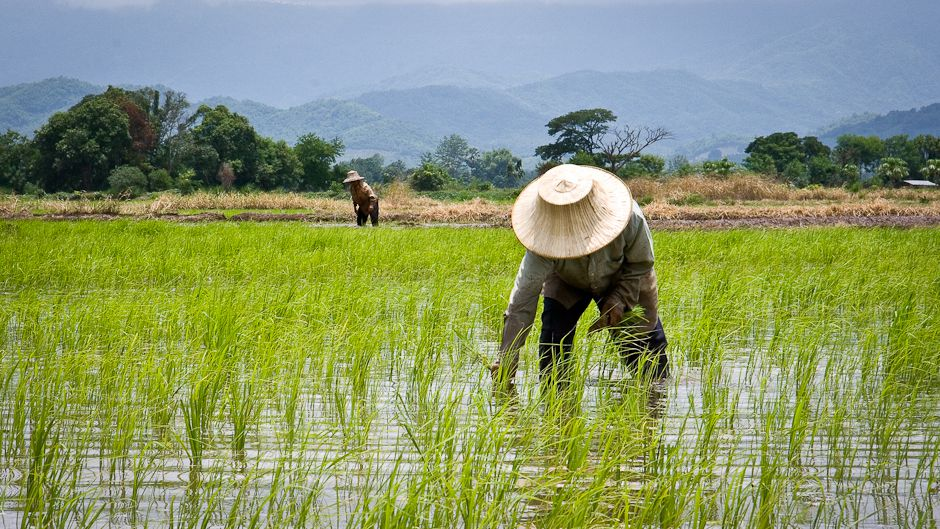Wet Farming Practices – In many parts of India, where water is available in abundance, farmers follow a method known as wet farming. Unlike dry farming, which depends solely on rainfall, wet farming involves the regular use of irrigation to supply water to crops throughout the growing season. This method is especially common in the fertile plains of Punjab, West Bengal, Tamil Nadu, and Haryana—states that have access to rivers, canals, and rich groundwater reserves.

Table of Contents
How Does Wet Farming Practices Work?

Wet farming revolves around one main principle—controlled irrigation. Farmers use different techniques such as surface irrigation, drip irrigation, or sprinklers depending on the land and crop type. In areas like West Bengal, large-scale surface irrigation is common, especially for paddy cultivation. Water is flooded over the fields to maintain the standing water required for rice. Meanwhile, in areas like Tamil Nadu or Gujarat where water conservation is also a concern, farmers may prefer drip irrigation systems to directly deliver water to the plant roots with minimal waste.
What Are the Common Crops Grown Under Wet Farming?
Rice is the most widely grown crop under wet farming. Its demand for constant water makes it almost impossible to cultivate in dry regions. Besides rice, sugarcane, bananas, and cotton are commonly grown through this method. These crops require more water over longer periods, which is why wet farming becomes a necessity in such cases. Farmers in the delta regions of the south or in the Indo-Gangetic plains have been practicing this method for decades with great success.
Why Is Wet Farming Important in India?
Wet farming is responsible for a huge share of India’s total food production. The consistent availability of water means farmers can produce higher yields, often harvesting more than one crop in a year. This reliability improves food security, supports the rural economy, and helps stabilize farmers’ incomes.

It also supports employment in rural areas. Because wet farming often leads to higher productivity, it increases the demand for labor—from land preparation to harvesting. This helps families in agrarian regions remain financially stable throughout the year.
What Challenges Do Farmers Face in Wet Farming Practices?
While wet farming offers many benefits, it also comes with serious challenges. One of the most pressing concerns is the depletion of water resources. In states like Punjab, where tube wells have been widely used for irrigation, groundwater levels have been falling rapidly. Over-irrigation also leads to soil salinity, which reduces fertility and long-term productivity of the land.
Another issue is the environmental impact. High water usage in farming can strain local water bodies, disturb ecological balance, and make agriculture vulnerable to climate change. Unpredictable monsoons and rising temperatures further complicate matters, sometimes resulting in either floods or droughts in areas once considered stable.
How Are Farmers and Scientists Solving These Issues?

To address these problems, many farmers are now shifting toward smarter, more sustainable water management methods. Drip and sprinkler systems are being encouraged across states to conserve water while still keeping crops hydrated. In areas with moderate rainfall, farmers are also combining rainwater harvesting systems with irrigation.
One particularly successful approach has been integrated farming. In Odisha, for example, researchers introduced a two-stage rainwater harvesting system that allows farmers to grow rice and rear fish in the same field. This not only maximizes the use of water but also diversifies income sources.
Success in Eastern India
A remarkable study from Eastern India showed how using simple tank and open well systems increased irrigation potential significantly. Farmers who followed this system saw a 32% rise in cropping intensity and improved overall income. In another case, rice-fish farming helped generate rice yields of 5.3 tonnes per hectare along with 1.6 tonnes of fish, proving that with the right techniques, even limited water can be used efficiently.

Wet farming continues to be a vital part of India’s agricultural framework. As population and food demand grow, the importance of sustainable irrigation methods will only increase. The future lies in blending traditional knowledge with modern technology—preserving the roots of Indian agriculture while ensuring it can flourish in a changing climate.
